|
In This Issue...
- IBNS 2018 Election Results!
- A Familiar Setting Throughout Career Stages
- Hobby Much? Knit Your Stress Away...
- Noldus Workshop: Zebrafish-Based Models in Behavioral Neuroscience
- Trending Science
- Get "The Daily" on Behavioral Neuroscience
- Join IBNS on Florida's Coast in Boca Raton!
- Boca Raton Tours
- 2018 Awards Banquet: Theme Announcement
Join us for the IBNS 27th Annual Meeting in beautiful Boca Raton, Florida, USA at the Boca Raton Resort from June 27-July 2, 2018! For more information, please visit IBNS 2018 Annual Meeting and feel free to contact the IBNS Central Office with any questions.
IBNS 2018 Election Results!
Thank you to the candidates and members who participated in this important process.
We are pleased to announce the results of the IBNS 2018 Election:
President-Elect: Jared Young
Secretary: Tiffany Donaldson
Australasian Councilor: Yasushi Kiyokawa
European Councilor: Verity Brown
Latin American Councilor: Rosalinda Guevara-Guzman
USA Councilor: Amanda Kentner
Student Councilor: Patricia de la Tremblaye
See full bios and photos of those elected.
A Familiar Setting Throughout Career Stages
by Corina Bondi, PhD
Assistant Professor, Department of Physical Medicine and Rehabilitation and the Safar Center for Resuscitation Research (SCRR)
University of Pittsburgh School of Medicine, Pittsburgh, PA, USA
As a mid-career graduate student at the University of Texas Health Science Center at San Antonio, I was perusing the exhibitor aisles at the Society for Neuroscience annual meeting and stopped in my tracks at the sight of a “behavioral neuroscience” meeting advertised for St. Thomas, USVI, as well as Mrs. Marianne van Wagner’s invitation to check out the booth. As a behavioral neuroscientist myself, and a trainee who always took the opportunity to apply for a travel award, I took the flyer and excitedly prepared my award application during the following weeks. My Ph.D. mentor at the time was very supportive and has attended the meeting in the past himself.
A few months later and with a travel award in tow, I was attending my first IBNS meeting. Within a few days, I quickly learned that this meeting, albeit smaller and more intimate than other neuroscience-focused conferences, encompassed a unique combination of faculty and trainees from small and large universities alike, the NIH, and even industry. Not only were most neuroscience career paths represented, but everyone was extremely friendly and willing to welcome newcomers into the IBNS scientific family.
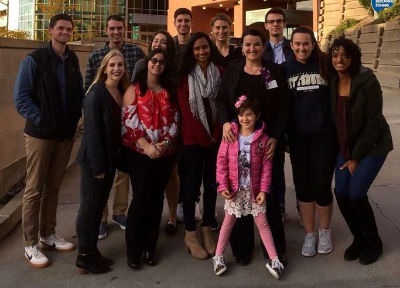
As the years passed, I have thoroughly enjoyed getting involved, as much as time allowed, with various committees and positions within the Society. While serving as Student Councilor or working with the Communications, Membership, Education & Training Committees, as well as the Program Committee, I enjoyed the sense of inclusion and accomplishment that came with assisting the Society’s growth, while also learning a great deal about how conferences are set up and set in motion. Most importantly, friendships and collaborations flourished, having gained a network of scientists and colleagues that are very important for one’s career. It is basically due to IBNS that I am currently a faculty at the Safar Center for Resuscitation Research of the University of Pittsburgh, as my transition from the first to the second postdoctoral position at the Safar Center occurred by virtue of establishing the connection at IBNS.
As some of my dozen or so students will commence to attend the IBNS meeting as well, I am looking forward to hearing about the graduate school laboratories that they will join as a results of networking within IBNS. I will continue to encourage the students to expand their network and gain as much as possible from the meeting, as well as from the IBNS social at the Society for Neuroscience annual conference. More than anything, IBNS is a close knit behavioral neuroscience community that offers everyone ample opportunities to grow professionally, mingle, and have fun!
Hobby Much?
Knit Your Stress Away...
by Kim Gerecke, PhD
Associate Professor, Psychology and Behavioral Neuroscience
Randolph Macon College
Creative arts have been shown to be potently beneficial for healthy cognitive aging. Among the many ways that creativity is beneficial, is that it lowers stress. This reduction in stress decreases inflammation and oxidative stress in the brain, two factors which contribute to accelerated aging. Thus, the benefits aren’t just in the brain. It’s been shown that older persons who engage in learning a new cognitively challenging, but fulfilling, creative activity such as digital photography or quilting, have fewer falls, doctors’ visits, and require less medication than those who engaged in purely cognitive activities for the period of the study. In my stressful graduate work, research like this really resonated with me. As well, we scientists spend most of our time engaging in purely analytical pursuits, so I was also craving more creative outlets.
I’ve never considered myself to be a creative person. I can play the piano, but I never had even the slightest inspiration to compose a piece, for example. So, at some point in my life I came to the realization that my creativity was going to be limited to things that involved following a pattern. Perhaps that’s why knitting is so enjoyable for me. As well, there’s something very tactile about working with the soft yarns, and it’s so very satisfying to see tangible progress on something, especially since so much of our work tends to be very delayed in terms of gratification (if it comes at all). Research also shows that rhythmic movement promotes the release of serotonin in the brain, which also helps contribute to higher subjective well-being. And, informal studies have shown that knitters self-report higher self-efficacy, and a perception of improved cognitive function.
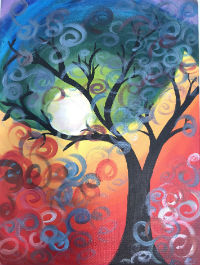
I have tried expanding to other creative arts, by going to a paint party. As others sipped wine and chatted merrily away, I focused intently on my creation. Within a short while, I was a step behind the others, then two. At some point I realized that I had begun to sweat, and had fallen utterly silent, too focused on the work to participate in the lively conversations around me. Clearly, my perfectionist tendencies do not allow me to just let go and let the creative juices flow, and I did not receive the stress reducing effects that others were so obviously enjoying. I’ve included a picture of my painting, which now hangs in a suitable place of distinction, my bathroom.
I think I’ll stick to knitting.
Looking for a new employment opportunity or struggling to find the right candidate? Meet the IBNS Career Center!
One of the biggest challenges for any international scientific society is to provide quality and informative support to its members, whether it is for a new employment opportunity or for finding the right candidate for a new position you opened. The IBNS excels in this area through its online Career Center portal (http://jobs.ibnsconnect.org) through which it provides the right tools for both, job seekers and employers.

The IBNS Career Center portal offers all the standard operational features, such as a thorough search engine by keyword and location, as well as extra services such as a free review of your resume for feedback and a job-posting service for employers. However, what makes the IBNS Career Center stand out in terms of support, is two additional quality features: resources for job seekers & access to a resume bank for employers.
In the Resources section you can have access to a number of articles with valuable tips in resume building, job seeking and communication, from experienced scientists in the field, not only for searching or applying for a position, but also for the interview process. There is also plenty of advice and tips for building your ‘brand’ and your social media presence, which will help you strengthen your image and moving your career to the direction you want.
 In the Resume Bank, potential employers have free access to a large bank of resumes and profiles, which you can customize by introducing filters that apply to your search and create lists of candidates that fulfill your own criteria. In the Resume Bank, potential employers have free access to a large bank of resumes and profiles, which you can customize by introducing filters that apply to your search and create lists of candidates that fulfill your own criteria.
Noldus Workshop: Zebrafish-Based Models in Behavioral Neuroscience
by Yvonne Humphrey
Marketing & Conference Coordinator
Noldus Information Technology Inc.
Zebrafish (Danio rerio) are rapidly growing in popularity as a model in neuroscience, toxicology and behavioral research. The goal of this workshop is to demonstrate to the IBNS community the growing utility of zebrafish-based models in behavioral neuroscience. In addition, to the use of zebrafish in neurogenetics and neurodevelopmental research, both larval and adult zebrafish are gaining popularity in high-throughput drug screening, toxicological assays, as well as mimicking complex brain disorders. Speakers at this workshop, representing well-established zebrafish laboratories, will outline the recent developments in these fields. Noldus Information Technology will host this event and prepare a live demo of the software.

Trending Science
In this column, we share the latest research, interesting scientific articles and news.
A Need for Speed - Increased Locomotor Activity Enhances Learning
by Julianne Jett, PhD, Guest Editor
Scientists from the Champalimaud Centre for the Unknown recently published a study in Nature Neuroscience that demonstrated increased running speed is linked to enhanced learning in mice (Albergaria et al, 2018). Specifically, a delayed eyeblink conditioning procedure was applied to investigate a cerebellum-dependent form of associative learning. In head-fixed mice, they found that increased locomotor speed drove an earlier onset of learning and a trial-by-trial enhancement of learned responses. Furthermore, once the mice mastered the task, their subsequent performance of that task was also dependent on running speed. These findings provided causal evidence that increased locomotor activity enhances learning, as imposed changes in running speed were sufficient to modulate leaning.
Additionally, the effects of increased locomotor speed on learning were shown to be independent of sensory modality. This evidence suggested that the neural mechanisms involved are downstream from sensory processing. In subsequent studies, optogenetics was used to stimulate mossy fibers in the cerebellum. The team found that substituting mossy fiber stimulation for running was sufficient to replicate the facilitatory effects of increased locomotor activity on learning. Whether or not the modulatory effects of running speed on learning holds true across different types of locomotion or is specific to those that activate mossy fibers remains to be determined.
A press release about the laboratory that conducted the research, the implication of their findings, and the puzzling data that led to their discovery can be found online at Medical Express.
References:
Albergaria C, Silva NT, Pritchett DL, & Carey MR (2018). Locomotor activity modulates associative learning in mouse cerebellum. Nature Neuroscience. doi: 10.1038/s41593-018-0129-x
Get "The Daily" on Behavioral Neuroscience
IBNS News you can use...everyday.
By Patricia de la Tremblaye, PhD
University of Pittsburgh, Pittsburgh, PA, USA
To increase IBNS members' benefits, the IBNS Central Office has initiated a newsletter compiling an interesting selection of behavioral neuroscience news-articles displayed in a daily email message.
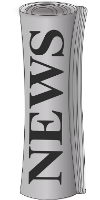 The service searches 23 different behavioral neuroscience websites and pulls the top matches for the behavioral neuroscience keywords, set up in agreement with the IBNS Membership and Communications Committee. It gives a quick glimpse of the daily news and easy links to read the rest of the articles you find interesting. Members must subscribe to the paper in order to receive it daily, and can unsubscribe at any time. As a benefit to IBNS members, there is no cost! The service searches 23 different behavioral neuroscience websites and pulls the top matches for the behavioral neuroscience keywords, set up in agreement with the IBNS Membership and Communications Committee. It gives a quick glimpse of the daily news and easy links to read the rest of the articles you find interesting. Members must subscribe to the paper in order to receive it daily, and can unsubscribe at any time. As a benefit to IBNS members, there is no cost!
The link to the newsletter also goes out on Twitter automatically each day. This is a great application that simplifies staying up-to-date of imminent neuroscience findings without having to browse multiple websites to do so.
Do not miss any more neuroscience news! Subscribe to the email newsletter!
Join IBNS on Florida's Coast in Boca Raton!
Registration Discounts Offered for the 2018 Annual Meeting
Join the International Behavioral Neuroscience Society for the 27th Annual Meeting which will take place on June 27-July 2, 2018 in Boca Raton -- South Florida's sparkling coast.
Here are a few important dates to take into account if you have not taken action yet:
Last Day for Cancelled Registration Refunds (minus $25 service fee): Monday, April 30, at 12:00am
Exhibitor Registration Deadline: Tuesday, May 1, at 12:00am
Last Day for Meeting Registration: Friday, June 1, at 12:00am
Wouldn't you like to save additional discounts on registration fees? Join IBNS and receive even more discounts!
Don't forget to also share your photo on Facebook, Twitter, and/or Instagram. Be sure to tag us and use the hashtags #IBNSConnect and #IBNS2018.
Remember to "like" and follow IBNS on Facebook, Twitter, and Instagram.
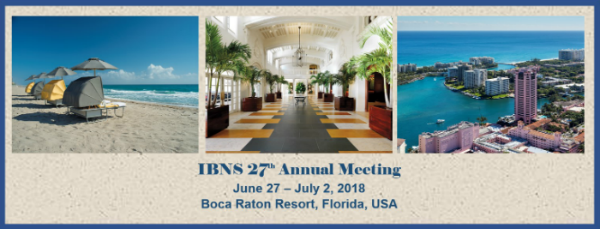
Boca Raton Tours
by Eve Van Wagner, IBNS Central Office
There are so many things to see and do in Boca Raton -- even a little monkey business! IBNS is offering an educational, pre-conference tour on Wednesday, June 27, to the Monkey Jungle/DuMond Conservancy.
There, you will find various primate species in semi-natural habitats and five acres of Rainforest Exhibit with approximately 120 squirrel monkeys and five capuchins - all hungry and waiting to jump on your head or eat from your hand! There are several additional species housed throughout the park, including a semi-free ranging group of Java Macaques and naturalistic habitats of owl monkey families.
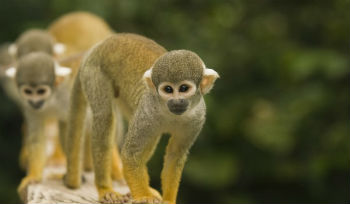
Gather under the Tiki Hut for "edutainment" for discussions of ongoing research projects and lunch. Who knows, you may find an opportunity for a future research collaboration! Our own Kelly Lambert (University of Richmond) says, "It's one of my favorite places to visit." She has been taking students to the DuMond Conservancy for almost three decades, and has even commenced several projects with Massi Bradi.
This tour will be $135 per person (lunch included) and will be capped at 18 people. Be sure to keep your eye out for the registration email. If you register after the 18 participant cap, you will be added to the waiting list.
Remember, if would like to explore elsewhere, you could go to Butterfly World, take an Airboat tour through the Everglades, or even take the Boca Raton Resort shuttle to the private beach!
Please feel free to contact the IBNS Central Office for any additional information.
2018 Awards Banquet: Theme Announcement
Because members have asked for it, this year's Awards Banquet will have a theme!
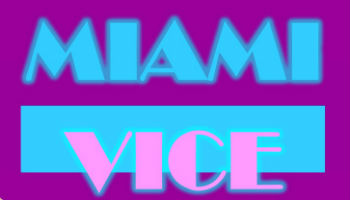
In addition to palm trees, ocean breeze, and glistening blue waters, Florida is also home to Miami Vice. We can't wait to enjoy our final night in Boca with all meeting participants dressed in our best Miami Vice 1980's fashion: t-shirt under pastel suits, no socks, rolled-up sleeves, Ray Ban sunglasses, big hair, etc.
Please join us for this year's Awards Banquet with food, drinks, iconic music, and maybe even more iconic dance moves!
Do you have an interesting hobby or member news to share?
Let us know at [email protected]
|